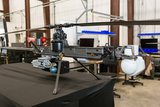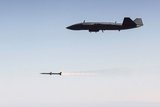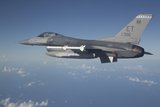Brazilian Army receives STREV radar components
The Brazilian Army Assessment Centre (CAEx) has received components of the ASTROS tracking radar pedestal and antenna which will be integrated into the Transportable Flight Engine Tracking System (STREV). The delivery was confirmed by a Brazilian Army statement made on 26 May.
The development of STREV forms part of the Instruction Field Instrumentation Project which was outlined in the Army Strategic Plan (PEEx) 2020-2023 and forms part of the ASTROS 2020 Army Strategic Programme.
The radar is manufactured in France and was initially acquired by Brazil in 1974, meaning that receipt of this new equipment represents a significant step in the system’s modernisation.
STREV will enable the CAEx to carry out tracking activities for missiles, rockets, heavy weapon munitions and UAS which will support the research and development of similar products by the Army Science, Technology and Innovation System and industrial defence base.
More from Air Warfare
-
![Anduril UK and GKN Aerospace collaborate on British Army ACP bid]()
Anduril UK and GKN Aerospace collaborate on British Army ACP bid
The pair will submit their demonstrator concept for Project Nyx, a development project for the British Army’s Land Autonomous Collaborative Platform.
-
![US Army command’s Picatinny CLIK common lethal drone interface makes progress]()
US Army command’s Picatinny CLIK common lethal drone interface makes progress
The Picatinny Common Lethality Integration Kit is designed to overcome the issue of unique integration methods between lethal payloads and drones as well as avoiding problematic acquisition conditions created by vendor lock.
-
![Australia invests extra A$1.4 billion in MQ-28A Ghost Bat after successful missile fire test]()
Australia invests extra A$1.4 billion in MQ-28A Ghost Bat after successful missile fire test
The investment includes new contracts for six MQ-28A Ghost Bat aircraft, as well as provisional funds to invest in the development of a Block 3 prototype.
-
![US approves potential $4.7 billion missile and air defence system sales to Denmark and Italy]()
US approves potential $4.7 billion missile and air defence system sales to Denmark and Italy
Italy could field the JASSM-ER for its combat aircraft including the F-35, while Denmark has been approved for AMRAAM and an Integrated Battle Command system procurement.
-
![Northrop Grumman to fly new Project Talon CCA by late 2026]()
Northrop Grumman to fly new Project Talon CCA by late 2026
The newly unveiled collaborative combat aircraft looks to strike a balance between capability and cost-effectiveness, according to the company.
























